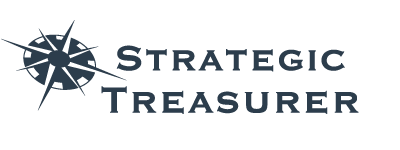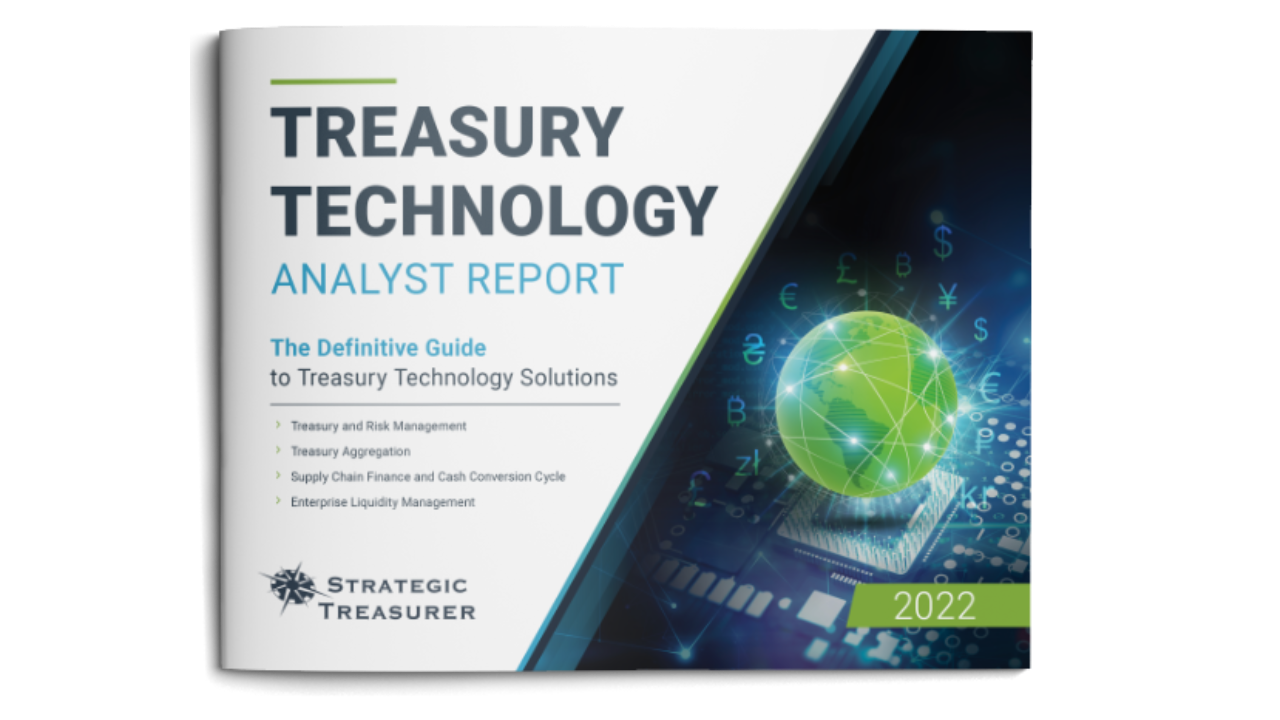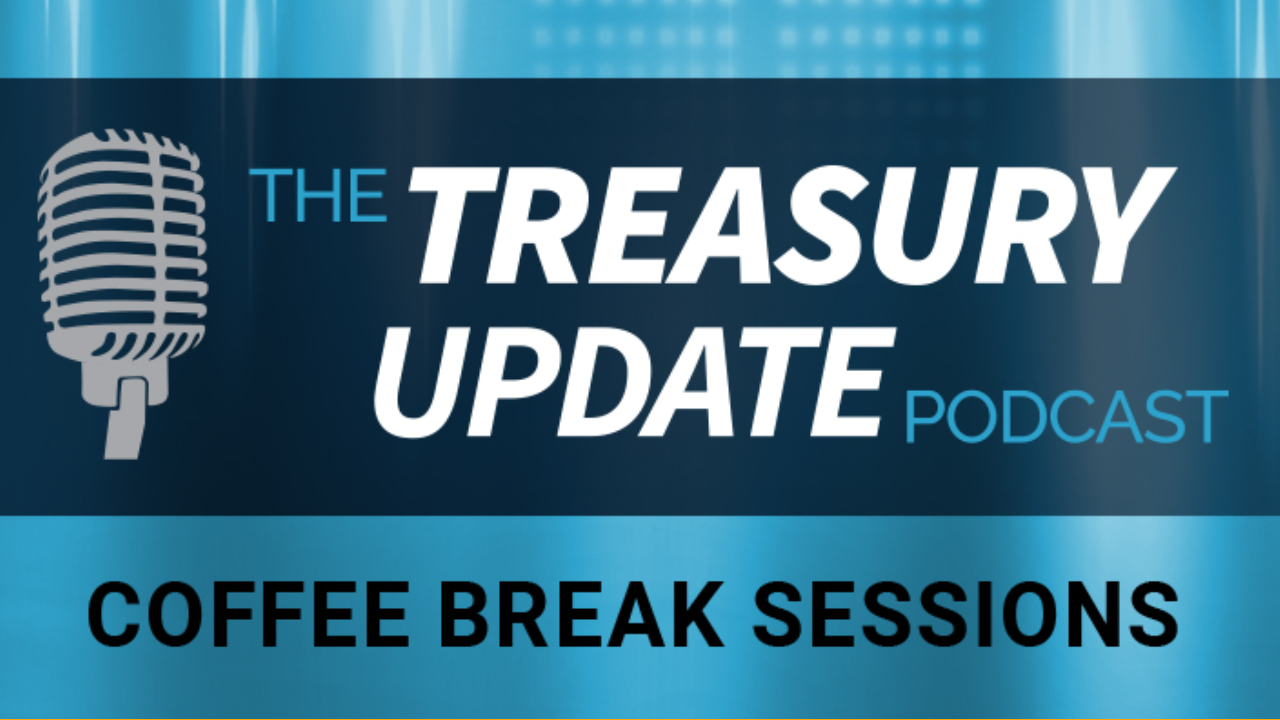
Session 94
Coffee Break Session: What Are Modeling and Forecasting?
In this week’s Coffee Break Session, we unpack modeling and forecasting as a corporate treasurer. Listen in and learn the key differences, explore real-world examples, and see how data can help drive accurate predictions.
Host:
Jonathan Jeffery, Strategic Treasurer


Speaker:
Craig Jeffery, Strategic Treasurer


Episode Transcription - (Coffee Break Session Series) - Episode 94 - What Are Modeling and Forecasting?
Jonathan Jeffery 00:02
Welcome to the Treasury Update Podcast Coffee Break Sessions presented by Strategic Treasurer, the show where we cover foundational topics and core treasury issues in about the same amount of time it takes you to drink your cup of coffee. I’ll be your host, Jonathan, media production specialist here at strategic treasure. So sit back, relax and enjoy the show. I’m here with Craig Jeffery, for another episode of the coffee break sessions. Normally this podcast goes over a definition. But today, you’re getting two definitions. So Craig, today we’re going to talk about modeling and forecasting. What are those?
Craig Jeffery 00:38
In treasury we think of those pretty similarly, I mean, forecasting is the projection of an activity or results. And that could be things like weather temperature, cash flow, defaults, demand, modeling is the set of formulas or assumptions used to determine the output for a forecast. So there’s a model that goes into making a forecast and you might run multiple models. And your forecast may have a range, or it may have a specific number, it may be the combination of multiple models. And then you arrive at what forecast you’re going to depend upon. But one is a projection and one is how you do that projection. Sometimes they’re used interchangeably. So it’s not you’re not really getting to full definitions on this Coffee Break Session, but you’re at least getting some definitions and description in the same same general realm.
Jonathan Jeffery 01:28
Yeah, and that’s how I put them together because they’re, they’re pretty good pair. So how does how does this partnership of modeling and forecasting help treasurers with decision making?
Craig Jeffery 01:38
The idea that, you know, forecasting certainly uses data and models and these models can really speed the process up where people are, depending on cash flows, for example, maybe simple models might be we do a moving average, or we just use a weighted average, to see what we expect from a cash flow with the assumption that the past is a good indicator of the of the future, right? What occurred in the past is likely to be what occurs today. And you might do a weighted average, which says, stuff that’s happened more recently is more important than the past. But we want to look back over a period of time, and so things are increasing or decreasing. If I wait more current numbers more heavily, I’ll do better with my forecast. And that may be that may be some level for helping and there might be other some other models that allow you to say, well, I can’t just drive my car by looking in the rearview mirror, I using different types of averaging models, I might find some precursors to those changes, some, some independent variables that feed into the dependent variable are my forecast. So if I see that the distribution, the number of stores I have, as I’m adding stores, and I figure out how long it takes for them to ramp up, the fact that I have new stores going in, gives me an ability to forecast and project from that because I have information about those independent variables and how that will in fact, impact let’s say, my sales, my revenue or my margin, those are some of the things that we use to to focus on, on a forecast. The other thing, John, I think, is useful as you know, the difference between expected value and a range. And I’ve talked about this on different podcasts, but sometimes feel like they come up with a forecast. It’s like, I think it’ll be 5.23 to one $6 million come in tomorrow. Well, that’s very, very specific. And that may be nice. And why is it? Why is it almost always different? Or it’s always off by a certain amount as well, because there’s a number of variables. So sometimes it’s much more helpful to say, what’s the expected range, you know, I’m confident that two out of three times it’s going to be, you know, whatever 4.5 million to 5.5 million 95% Confidence is going to be four to 6 million. And having some information where I know arrange tends to be more helpful. We tend not to put our forecasts together that way, most commonly in terms of the broader industry. But that tends to be more useful to say, here’s the variability I expect.
Jonathan Jeffery 04:12
So if you expect a range in the outcome from your forecast, do you put together a plan of range of action to match that?
Craig Jeffery 04:23
Yeah, that can be that can be defined if it’s, if it triggers or events now I need to borrow more, or I’ll just I’ll invest excess cash, if I have it, if I and I’ll leave a certain amount on the reserve side to hold it. Yeah, it’s recognizing that this range can happen. What do I do at the top end or the low end of the range? Even with, you know, a pretty sizable confidence interval might be like I’m 95% confident that cash flow be between these two items. Well, let’s say it’s below the negative side. What do I do if it goes below the negative side that might be a one out of 20 is going to fall outside the overall distribution? It may be two and a half percent is going to occur on the on the negative side. That’s an event that’s going to happen every career that’s a year long event. If it’s something that you’re projecting on a weekly basis, that’s something that’s going to happen a couple times in a year. So once a career once or twice a year, is where you’re going to see that and how do you handle that.
Jonathan Jeffery 05:18
So be ready for a negative outcome, be ready to have an action plan?
Craig Jeffery 05:24
Or you should have some, like, what would you do for that? How would you make adjustments? Let’s say, cash is very negative, what can you do? Do we have to sell other assets? Do we have a credit facility we can use? have really slow up our disbursement? We can offer different kinds of discount terms so that our, our customers pay us early. Those are all some of the things that can be done.
Jonathan Jeffery 05:46
And what are some of the key types of data that treasury teams are going to use for this modeling and forecasting? And how does it contribute to the accuracy?
Craig Jeffery 05:58
Yeah, that’s, that’s, that’s a good question. And it’s hard to answer in great detail for each of the items, I’ll give examples where but these are, these are things to think about. They’re they’re requires, you know, more specific application. But one of the biggest things that Treasury group’s uses historic bank information, why, while it’s readily available, they get all that information in, they’ve got history, that shows the net cash flows and the detail flows that have occurred through their banking system. So that’s us, that’s probably one of the most common areas easy to get. And it’s going to be accurate. The second that tends to be sales and accounts receivable, data, sales gives an earlier projection, you know, to Sup, you know, there’s a contract that’s been entered in goods or sold services are sold, and that’s going to convert to accounts receivable, some kind of invoice. And it’s going to get paid over time. And so sales a little farther out receivables, typically, you know, I might have 30, or 60 day terms, something like that, so that they can use that to manage inbound flows. The other things that are used might be curved data. So interest rate, you know, future interest rates, items related to commodity pricing, the futures for commodity pricing could even be things like weather expectations about the economy, all of those things can factor into the models that people use, it could be production of new home starts, if you’re in a business that sells something that is triggered by new home starts, there’s a range of things that can be used, but it starts with, you know, internal company data, usually from the bank, then extending throughout the financial systems of the company, to external data, market data, other types of information. And so that all of that information, the more data you have, and if you have a good model, better data, more complete data, accurate models allow your forecast to to become more accurate if if you’re if you’re doing things in the natural way.
Jonathan Jeffery 07:59
Do you have a specific example of when a company excelled from their forecasts that they, they predicted something, and their company really did? Well, because of that it can be a widely known story, it can be something that you saw in your career.
Craig Jeffery 08:15
This simple example is not, you know, publicly known, I won’t mention the company. But the company, you know, they went through both the short term cash forecasting, as well as long term balance sheet planning, that all the plans for their capital needs, looking and tracking to make sure that they had capital to manage the business. But on the on the short term forecasting side, they were experiencing volatility, it was really important for them to be pretty accurate. And so they, they kept working on improving their forecasting. And I remember talking with the person who had created models, and, and he had done a really good job of improving it going through iterations, he had moved the process of trying to address the treasurer’s concern, who was concerned about the volatility, the flows, and some of these wide variances that they had had, they had moved to looking at things from a day of the month scenario for cash flows that occurred, they even looked and broke things out by week of the month, right. So just distribution, things like that. They move to day of the week, you know, within the week of the month, they moved today that we can start to refine the model they found by backward testing, they get that that got better. And as we we worked with them further, one of the other helmets was, you know, factoring in bank holidays and tracking that because that blew up their model, whenever there was a blank bank holiday not because there was nothing that day, but because of what shifted later. And what shifted earlier was the bank holiday on a Monday was it you know, Thursday, etc. And so, you know, as they continued to refine and looked at different ways of distributed, taking into account holidays, and these are all fairly simple. These are things you can do with Excel. You’re not even doing regression and that really isolated me they’re forecasting extraordinarily accurate, they did pretty good, but there’s still significant variability. But as they tighten up the last couple of areas, all of a sudden is like, Okay, now we got a forecast that falls well within our band of comfort, essentially all the time, as opposed to having something occur at least every other month, that was fairly significant of a difference that got the treasurer excited. And so this, you know, reduced the level of excitement, the team got much more comfortable with with the activities. And so I think it goes to show just being able to focus on the forecast, figure out different models, and then find out what works the best can really make a difference for a foreign organization.
Jonathan Jeffery 10:39
What was the reward for that forecast?
Craig Jeffery 10:42
Well, you can look at a couple of ways one is not having to answer the treasurer. So there’s a career and social reward. The second was, their cost for borrowing same day was, I can’t remember if it was, it was like a percent higher than borrowing, you know, the next day having to borrow your funds at a later date. So since these are significant sums, that they’d have to borrow at, like at the last minute, you know, borrowing 20, 25 million, there was a legitimate cost to that. And so they looked at that from an economic standpoint, but I’ll tell you, in that particular case, it was more not getting all the attention from senior management, not necessarily just the cost of the funds out of borrowing versus the alternatives.
Jonathan Jeffery 11:25
It was interesting. Thanks for sharing that. And thanks for being on this podcast today.
Craig Jeffery 11:30
I was glad to talk about about these items. Thanks for bringing up AI. We talked about data extractions while that made that one fun, and today talking about modeling and forecasting brought back a lot of historical memories as well as so many companies are looking at forecasting and trying to do better and the use of tech and data extraction feeds into modeling and forecasts in some really good ways. Thanks, Jon.
Jonathan Jeffery 11:56
Yeah, this was really fun. For our listeners, make sure you tune back every first and third Thursday of the month. If you have any topics that you would like discussed on the show, send us an email. There’s an email in the description. Have a good rest of your week.
Announcer 12:14
This podcast is provided for informational purposes only, and statements made by Strategic Treasurer LLC on this podcast are not intended as legal, business, consulting, or tax advice. For more information, visit and bookmark StrategicTreasurer.com.
- Treasury & Risk Management Systems
- Treasury Aggregators
- Supply Chain Finance & Cash Conversion Cycle
- Enterprise Liquidity Management
Learn more about these technologies and evaluate some of the top vendors in each industry.




